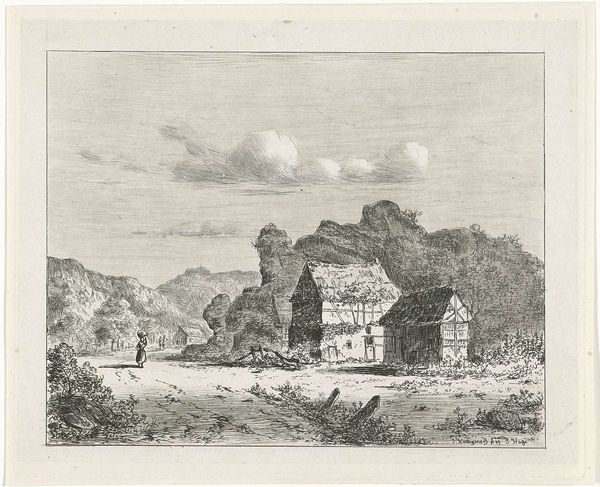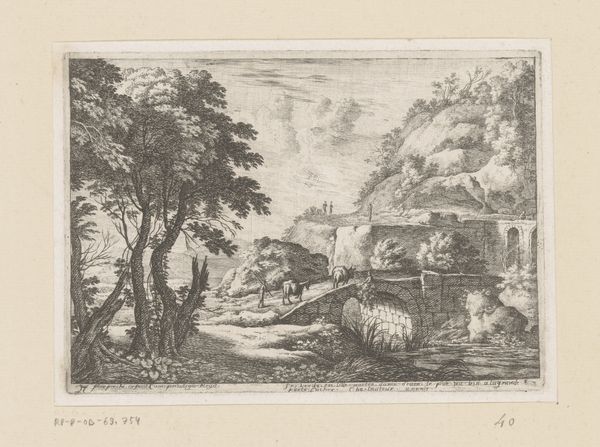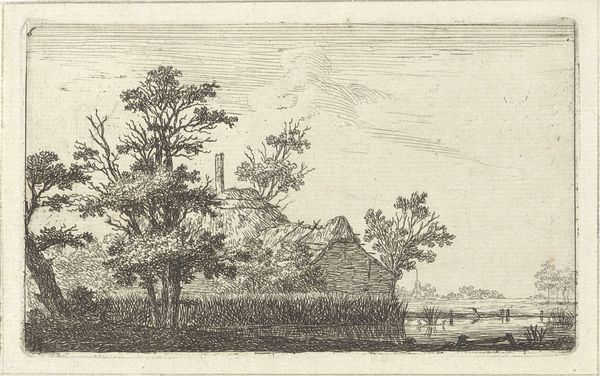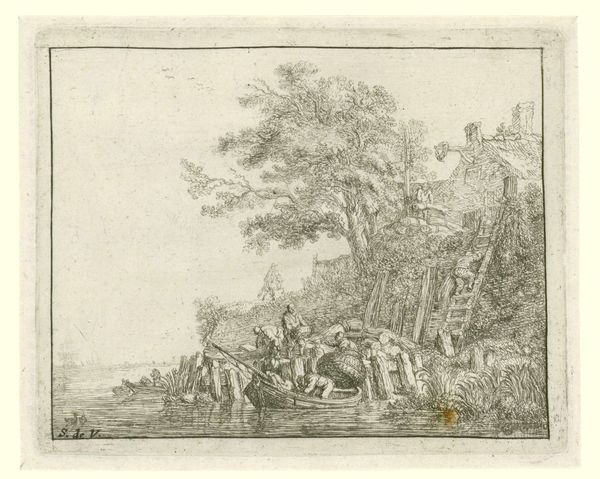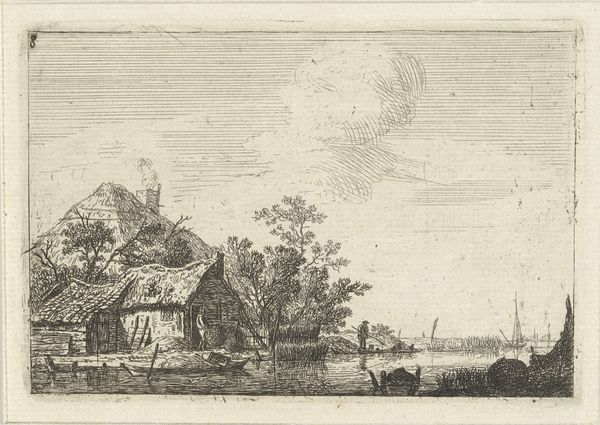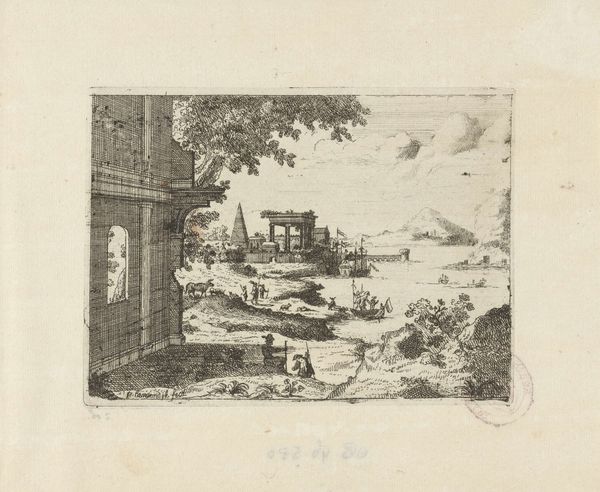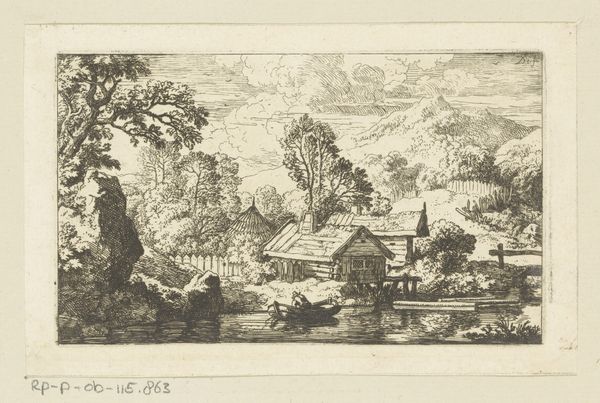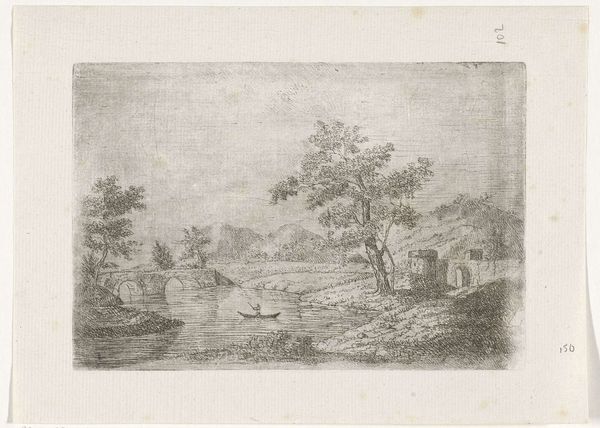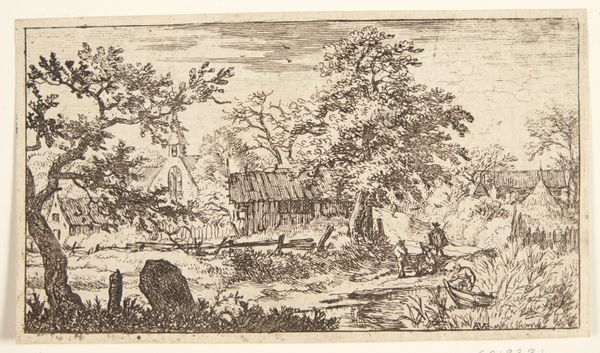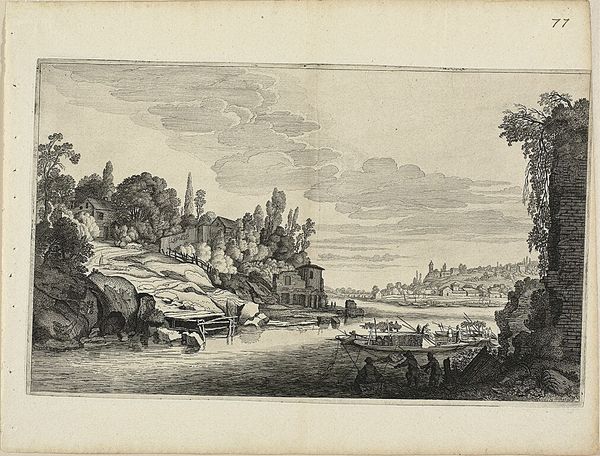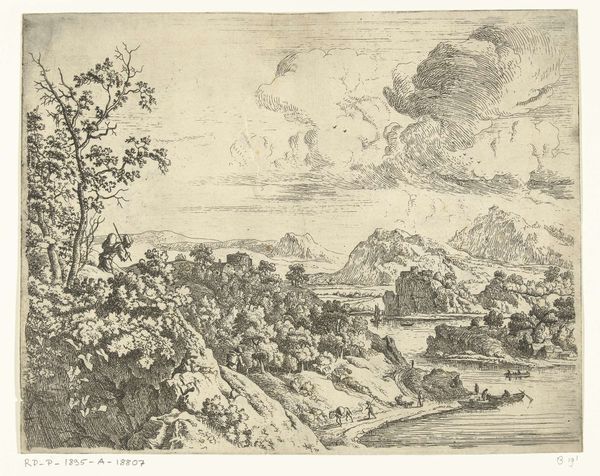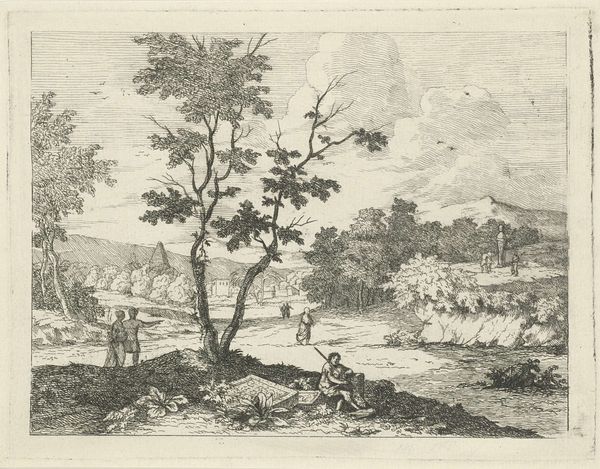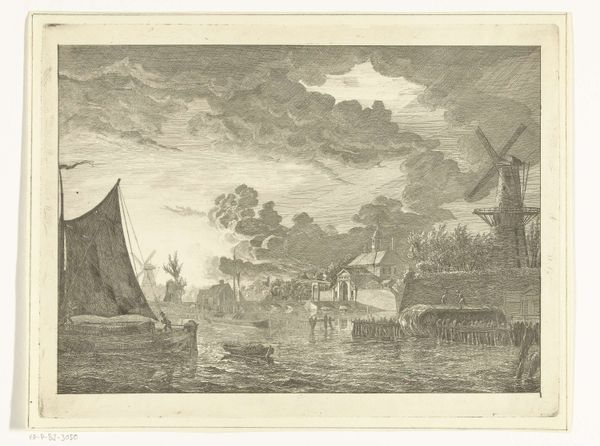
drawing, print, etching
#
drawing
#
dutch-golden-age
# print
#
etching
#
pencil sketch
#
landscape
#
realism
Dimensions: height 96 mm, width 125 mm
Copyright: Rijks Museum: Open Domain
Curator: Ah, a beautifully rendered Dutch landscape. This etching, dating from around 1796 to 1849, is titled "Landschap met boerderij aan water en twee vissers," or "Landscape with Farm by Water and Two Fishermen," and is attributed to Albertus Brondgeest. Editor: Immediately, I’m drawn to the quiet stillness of the scene. The detail is so fine; I can almost feel the damp air rising off the water. It feels melancholic but peaceful, all rendered in this delicate network of lines. Curator: The Dutch Golden Age artists were masters of capturing everyday life, elevating these scenes to a level of subtle beauty. Notice how Brondgeest uses light and shadow to create depth, focusing our attention on the farmhouse and the fishermen, subtly highlighting their connection to nature. The location now in the Rijksmuseum has probably displayed this in order to have us question their influence, as landscape painting during this time period in art and visual culture served as more than mere backdrops, which now feel like key societal moments and symbols in that century’s world view. Editor: Absolutely. The texture of the foliage is remarkable. Those reeds bending in the breeze... and the reflection of the farmhouse in the water creates this lovely sense of depth. But the scene feels almost dreamlike, doesn't it? Slightly hazy, perhaps more memory than a precise rendering. Curator: The printmaking process certainly lends itself to that soft, ethereal quality. And given the period, one can argue Brondgeest wanted to portray more than just realism but instead something grander, a sentiment perhaps, reflecting upon the changing landscape around him. Editor: Sentiment resonates. I imagine spending hours just watching the water, lost in thought. Do you think this idealized vision of rural life offered some escapism from urban realities? Curator: Undoubtedly. In a time of rapid social change and urbanization, these pastoral scenes became potent symbols of tradition, simplicity, and national identity. These landscape views became embedded in popular notions and narratives which reinforced existing status quo as much as gave comfort or hope. Editor: And that’s fascinating: How art reflects, reinforces, or even pushes back against societal shifts. I walk away feeling somehow restored, reminded to find solace in the small, simple things. Curator: Indeed. Brondgeest's etching provides a window into a bygone era, reflecting cultural values and allowing us to reconsider both what society can create and can represent about itself through artistic depictions such as the beauty inherent in rural existence.
Comments
No comments
Be the first to comment and join the conversation on the ultimate creative platform.
